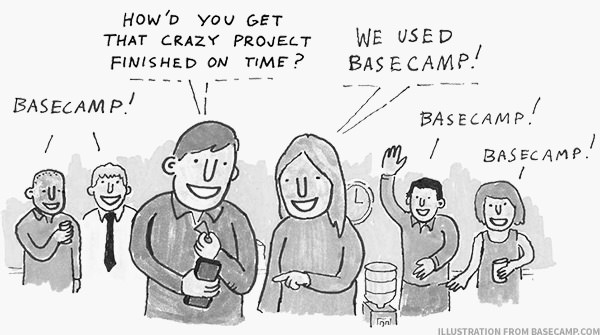What do messages like We create beautiful websites that grow your business; We help businesses succeed online; and Canada’s leading digital post-secondary institution all have in common?
All those statements are vapid and empty; there’s nothing to back them up. There’s no proof.
Standing by themselves, these messages just plain don’t work. You can find this type of communication everywhere you look, too – and there’s a good chance that your messaging is suffering from the same fate.
That’s a problem.
I mean, put yourself in your clients’ shoes. They’re in the research phase of the sales cycle, and the messages they’re seeing are often the exact same: broad, sweeping statements that have zero support. But if you’re the one in that pile of lazy marketing who establishes proof behind their statements? That can be the difference that pushes those prospective clients over to your side of the contract.
Remember: there are no sales without trust, and proof builds trust. Let’s explore, then, the different types of proof and how to use them effectively to solve that problem of vapid messaging.

What’s Your Proof?
“What’s your proof?” is a question we ask all our clients, prospective clients, and ourselves at Paper Leaf – and we ask it over and over again. It’s the question you should be asking yourself right now. How can you prove the messages & claims you’re making in your marketing materials?
You can start by understanding three key types of proof:
- Experiential proof
- Numerical proof
- Third-party proof
Not every person can always use every type of proof; not every type of proof packs the same punch for every person; and often, you’ll see combinations of these three proof types. Let’s talk about each of these types in-depth, and use some examples.
1. Experiential Proof
Experiential proof involves proving your statements through your past experience(s). The question to you, then: what do your past experiences allow you to say with proof? Here are some examples:
- Designers who claim expertise in responsive web design can prove their statement by showcasing a portfolio of their past responsive web work.
- Developers who claim expertise in WordPress can prove their statement by showcasing previous builds on the platform.
- Software products who claim UX as a selling point can prove their statement by showcasing the experience and proof of their team in past projects.
- Lawyers who claim expertise in an area can prove their statement by showcasing past similar successful cases.
You can already see how supplementing experiential proof to your marketing messaging immediately starts building trust that you can actually do what you say you can. You might be surprised at the amount of people who can’t.
2. Numerical Proof
Numerical proof is exactly as it sounds: the numbers that back up your statement. Hard data. When done right, numerical proof can carry a lot of weight – and thanks to the ease of data collection on the web, the numbers are right there at your fingertips. Here are some examples:
- Online marketers who claim they will increase revenues can prove their statement by pointing to the numbers from existing campaigns. For example: “Before we worked with RadClient, their average monthly eCommerce revenue was $5000. After 6 months, we grew their average monthly revenue 300% to $15,000.
- Software products who claim their application makes work more efficient can prove their statement by measuring and comparing the numbers before and after using their product. For example: “Automatedly reduces our clients’ data entry time by an average of 75%”.
- Mortgage brokers who claim to be able to get the best deal in their city can prove their statement by measuring the average savings passed on to their clientele, based against popular alternatives.
Hard data carries a lot of weight; yet, clients are smart and rightfully skeptical. They will see right through shady or misleading numbers, so don’t bother. I didn’t have to tell you that, though, right?
3. Third-Party Proof
Third-party proof can come in a variety of forms, but it all comes back to the same principle: when other people or organizations back up your messaging, you have proof. Here are some examples:
- Designers who claim quality & expertise can prove their statement through winning awards, receiving industry recognition, or through professional certification.
- Coffee shops who claim their location is the best in the city can prove their statement by collecting (and displaying) a mass amount of positive feedback via means like social media.
- Developers who claim they’re trustworthy & budget-minded can prove their statement by collecting related client testimonials.
- Food trucks who claim they’re the best in the city can help prove that statement by displaying Yelp or Google ratings.
Buying services or products from strangers can be a scary thing – but seeing outsider validation can help ease that fear (and build trust too). That’s the strength of third-party proof.
Each of the above proof types pack a punch, but the real power comes when you can bring all three into one, concise, related proof statement. Let’s look at one of the single best examples of that out there: Basecamp.

A Perfect Example of Proof in Marketing
Basecamp is a hugely successful & popular online project management application, and with good reason. Before I go any further, go check out their home page. Go on. Just make sure you come back here to finish this post. I’ll wait.
Alright, now that you’re back, let’s look into how Basecamp answers the question, “What’s your proof?” and how they use the three types of proof outlined above.
When you Google “basecamp”, their page title reads “Basecamp is everyone’s favorite project management app” – and their meta description claims “the world’s #1 project management app”. Reads a lot like one of those empty marketing messages this article started with, doesn’t it? But when you dive into their landing page, you can see the myriad ways they’ve backed up this statement with proof.
“Last year alone, Basecamp helped over 285,000 companies finish more than 2,000,000 projects.”
Right off the bat, Basecamp jumps into using numerical proof. Those numbers are huge. But if you look a bit more closely, there’s an element of third-party validation built right into that statement: 285,000 real companies use Basecamp. Man, it must be good. Even further: the phrasing of that statement has experiential proof as well. Their app, in a year alone, has 2M+ successful projects under its belt. That’s a lot of past success & experience in project management.
One statement. Three types of proof.
As we go further down the landing page, you’ll see more and more pieces of proof that back up Basecamp’s claims – and it’s not all written copy either. Alongside beautifully executed marketing copy, the landing page utilizes elements like:
- Client logos (third-party & experiential proof)
- Application screenshots (experiential proof)
- Sketches of happy Basecamp users (third-party proof)
- Links to successful past projects (experiential proof)
And more. If you want look at a single great example of using proof in marketing, look no further. Basecamp executes this wonderfully.
How You Can Successfully Use Proof in Your Messaging
Alright – I think I’ve flogged the dead horse of proof long enough. Actually I think I’m at that point where I’ve seen the word “proof” so much I’m starting to question whether it’s an actual word. Anyway, let’s talk about how you can start to successfully use proof in your messaging.
- Figure out what is the key message you want to get across. What do you do and why are you better than the alternatives?
- Figure out what you need to prove that message.
- Start gathering data, reviews, case studies and testimonials and so forth – the pieces that make up experiential, numerical, and third-party proof.
- Look for opportunities to gain industry or media recognition, and act on the valuable ones that will help prove your key message.
Finally, once you have the above completed, look for methods to showcase all that proof you’ve collected: on your website, through your marketing materials, on the walls of your brick-and-mortar business. After all, proof is worthless if you don’t make it easy to find.
Simple examples that come to mind: contextual testimonials or case studies; logos of businesses that use your service; a client list; easy-to-digest data visualization of numerical proof (charts, graphics); displaying Yelp or Google ratings; a chalk wall of hand-written customer feedback. Get creative with it – feel free to see how we’ve used the concept of proof throughout the entire Paper Leaf site too. Let me know how many examples you find!
Wrapping it Up
Saying your business or product is the best X is an empty statement in and of itself; every business on earth says that. The real question is: how can you prove that statement?
photo credit: Katey Nicosia via photopin cc

